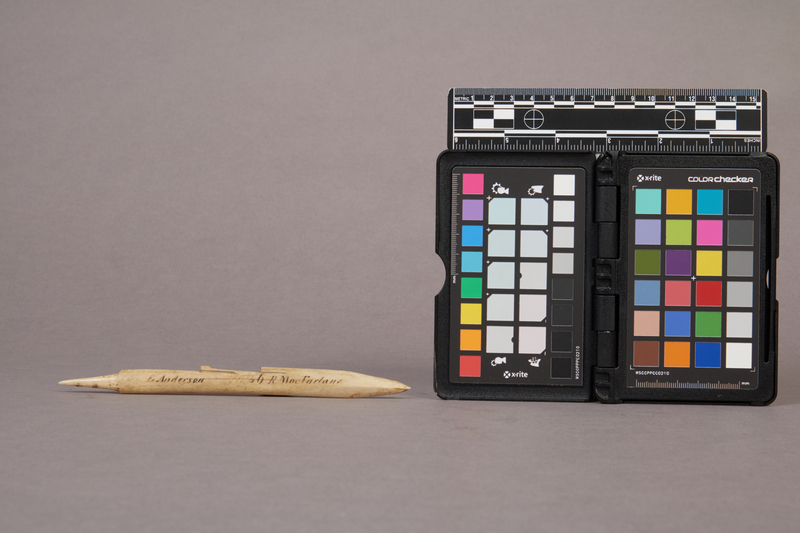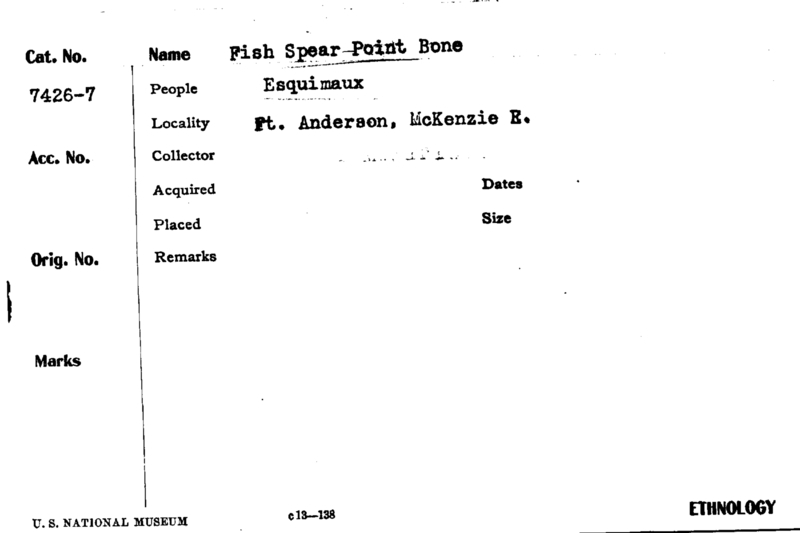Bone Arrowhead Item Number: E7426-0 from the National Museum of Natural History






Notes
From card: "Fish spear point bone."Source of the information below: Inuvialuit Pitqusiit Inuuniarutait: Inuvialuit Living History, The MacFarlane Collection website, by the Inuvialuit Cultural Resource Centre (ICRC), Inuvik, N.W.T., Canada (website credits here http://www.inuvialuitlivinghistory.ca/posts/12 ), entry on this artifact http://www.inuvialuitlivinghistory.ca/items/105 , retrieved 1-27-2020: Arrowhead made from bone. It is self-pointed, with barbs along one edge and a conical tang that appears to have been repaired. The Smithsonian Institution catalogue identifies this as a tip for a fish spear; however, it is similar in size and shape to arrowheads on arrows in the MacFarlane Collection. More information here: http://www.inuvialuitlivinghistory.ca/item_types/4: Complete arrows as well as separate arrowheads are present in the MacFarlane Collection. The arrow shafts are made from a single piece of spruce, and typically are 60 to 70 cm. long. Most have been stained with red ochre. The shafts are round in cross section, except near the notch for the bowstring where they are slightly flattened to provide a better grip for the fingers. Fleching consists of two split and trimmed feathers attached with sinew lashing. Several types of arrowheads were used, depending on the game that was hunted. Some of the ochre markings on arrow shafts may have been owner's marks, and some arrowheads are likewise marked with notches and incised lines that might have been used to identify their owner. Community Interpretations Darrel Nasogaluak: Arrowheads were meant to come off the shaft after an animal was struck. My grandfather Edgar Kotokak told me that barbs were cut into only one edge so that the head moved around inside the wound as the animal moved, increasing the chance of killing it.
Item History
- Made in Northwest Territories, Canada
- Collected in Northwest Territories, Canada
- Received from Roderick R. MacFarlane on January 7, 1869
What
- Name
- Bone Arrowhead
- Identification Number
- E7426-0
- Type of Item
- arrow
Who
- Culture
- Eskimo, Inuit and Inuvialuk
- Received from
- Roderick R. MacFarlane
Where
- Holding Institution
- National Museum of Natural History
- Made in
- Northwest Territories, Canada
- Collected in
- Northwest Territories, Canada
When
- Acquisition Date
- on January 7, 1869
Other
- Accession Number
- 69A00012